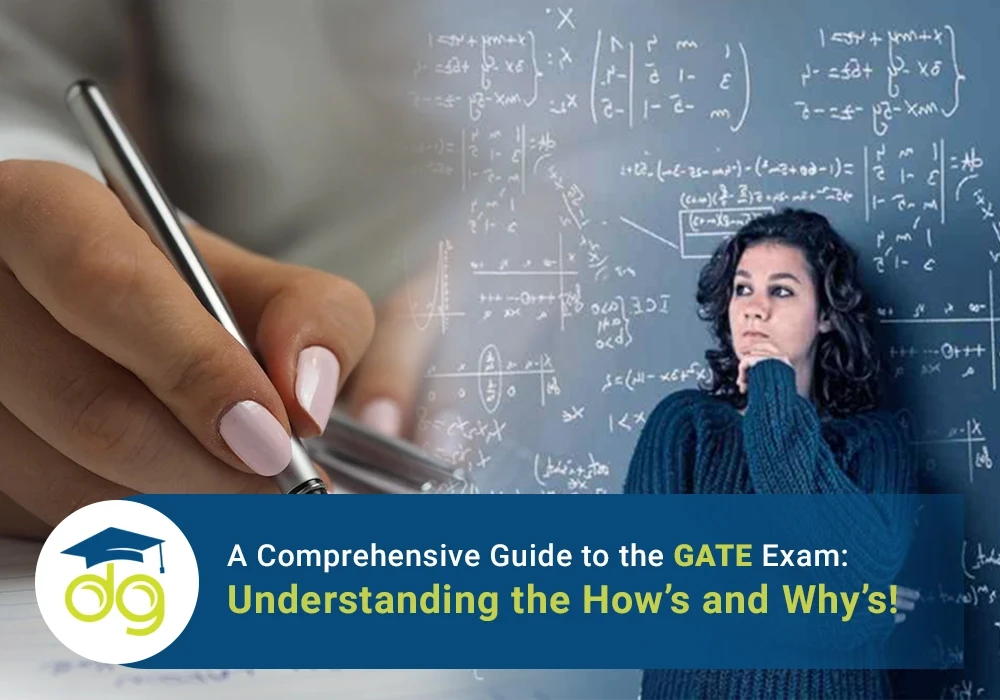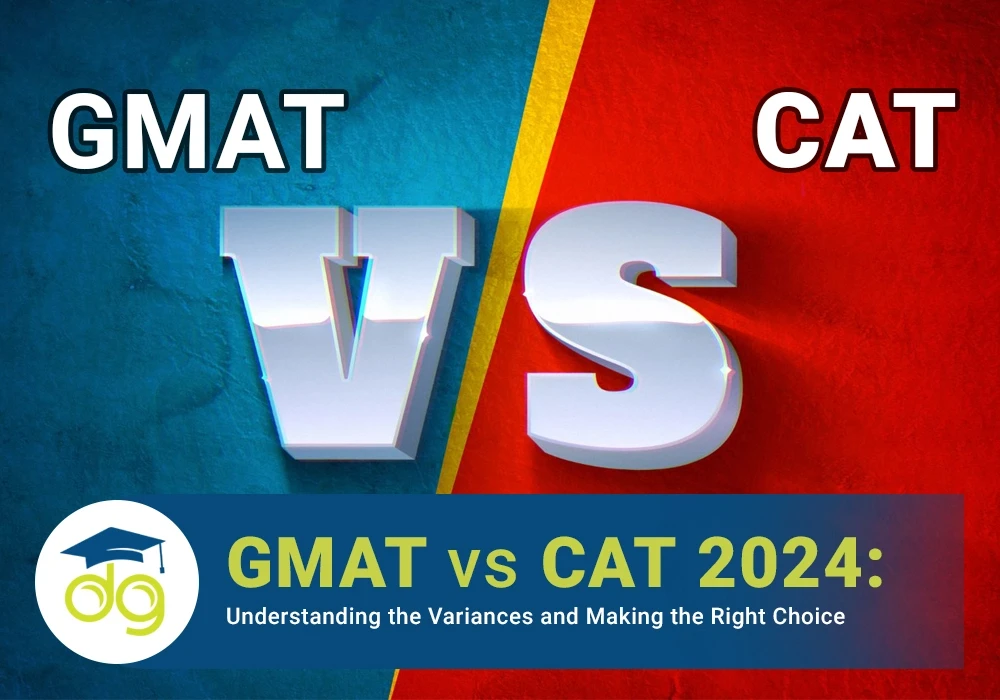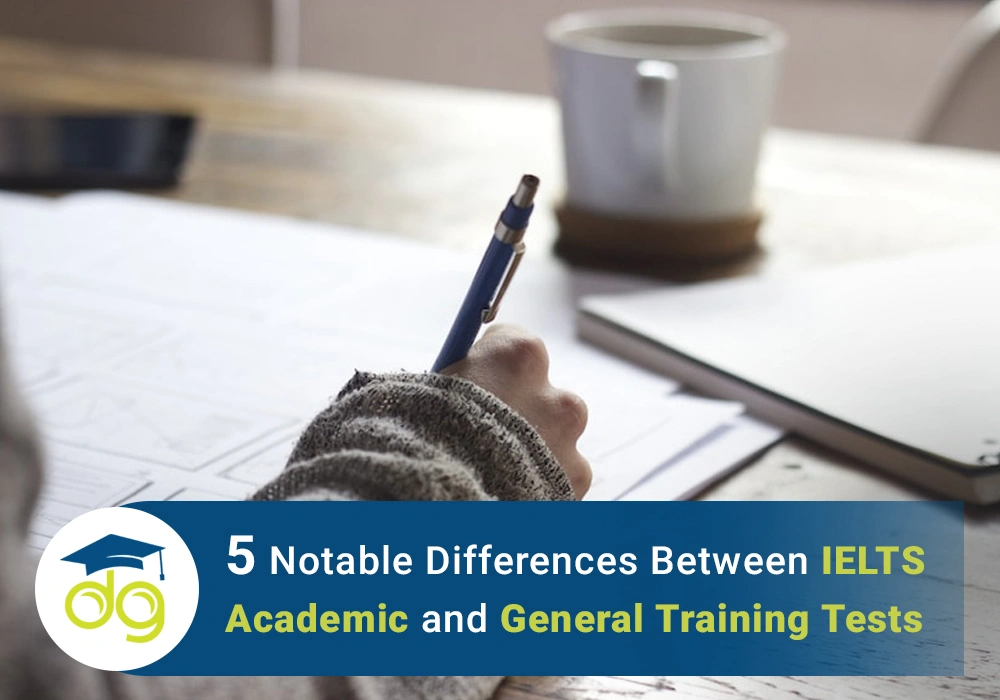5 Notable Differences Between IELTS Academic and General Training Tests
Explore key differences between IELTS Academic and General Training tests.
Introduction
Did you know that out of all tests done around the world, the IELTS exam is taken by more than 3.5 million candidates each year?
Perhaps it's the type of IELTS test you eventually decide to take that opens a door to the world for academic greatness or just to seek new life opportunities abroad.
This is probably because IELTS offers the test takers a chance to benchmark themselves in utilisation of the English language as their common medium of communication.
It is one of the most vital means for access to further education courses, professional training and many more important things like immigration to English-speaking countries. However, there are two forms for this test, namely; IELTS Academic and the IELTS General Training.
In this blog, we are frequently comparing and contrasting some of the aspects of IELTS Academic and General Training Tests. So, understanding the differences will help you to decide which test suits your purpose whether it is for ordinary academic purpose, for professional purpose or for immigration purpose.
These differences will make it apparent to the students and aspirants and will help them choose what is best for them and easy to accomplish.
1. Purpose and Target Audience
IELTS ACADEMIC
Purpose: This is for test candidates looking for an opportunity to undertake higher education programs or professional registration in an English-speaking country. This will establish whether a candidate is prepared to study or train under English at an undergraduate or postgraduate level.
Target: This test is aimed at university or college students and professionals who are seeking academic or licensing rights. Institutions administer this test to ensure that the language skills of the candidate are appropriate for working and learning within the academic and professional environment.
IELTS General Training
Purpose: IELTS General Training test is designed for all the candidates who would like to migrate to an English speaking country. It can be for students who apply just to get a secondary education, training and for the reason of gaining work experience. It is about the language which is used to overcome the daily experience and the challenges of the world of work.
Target Group: This is the recommended version for immigrants, non-academic job seekers, and people interested in applying for vocational training. It is largely acceptable to the visa-issuing immigration authorities in countries like Canada, Australia, etc.
2. Content and Format Testing
IELTS Academic:
Reading Section: It consists of three long texts based on books, journals, and magazines concerning academic topics. The passages are usually complex, as the candidates are supposed to understand detailed arguments and the interpretation of data.
Writing: Task 1 candidates are provided with a diagram, comprising information provided, like graphs, charts, or diagrams, to be explained before summarising. Task 2 requires the candidate to write an essay in response to a given topic about which one must argue; one must clarify an argument by giving evidence.
IELTS General Training:
Reading Section: The texts are diversified and adapted from advertisements, newspapers, instructional manuals, and any other ordinary type of material. Elaboration in the content is less, but functioning is more. It generally uses language in daily life.
Writing Section: Task 1 involves writing a letter—formal, semi-formal, or informal—based on the given context, while Task 2 requires writing an essay, which almost repeats the theme of the Academic version where general topics may relate to social issues or personal experiences.
3. Challenge Rating
IELTS Academic:
The IELTS Academic test is generally more difficult due to the academic nature of texts, having an in-depth reading text with complex vocabulary and ideas inside. The Writing tasks require a formal way of writing with due attention to structure, coherence, and argumentation.
Difficulty: This test is at just the right level of difficulty, considering the purpose for which the test was intended - to understand and reproduce complex academic texts. This is rather important to academic success at university.
IELTS General Training
On the other hand, IELTS General Training is believed to be easier since it contains more practical content related to everyday life. The reading texts are not that big, less special vocabulary is used. Writing tasks are easy and connected with practical language.
Purpose: Make the test friendlier to more candidates by testing practical use of English in natural and everyday situations. Meet the needs of those test candidates that have job prospects, immigration or vocational training with need for functional English proficiency.
4. Listening and Speaking Section
Listening Section:
Content: The format of the listening test is also the same for both IELTS Academic and General Training tests. It consists of four recorded texts – conversation and monologue, from everyday social situations to more formal academic contexts.
Difficulty: Similar content of questions is maintained in the two versions of the tests, where listening skills assessed are main ideas, specific details, opinions, and attitudes.
Speaking Section:
Format: The speaking section of the IELTS is common for both Academic and General Training. It is an examiner-led, face-to-face interview. An extended range of topics from personal experiences to abstract ideas are considered.
Focus: The Speaking part in all the versions of the test examines fluency in English, but mainly emphasises coherence and proper pronunciation as well as proper vocabulary.
5. Results and Scoring
IELTS ACADEMIC
Scoring: IELTS Academic scoring is judged to represent capability in an academic context. Entry into some programs of study or professional bodies may require higher scores as applicants would be required to demonstrate ability to gain access to complex academic arguments. An example of not less than 7.0 could be a requirement for entry into many postgraduate courses.
Band Descriptors: Coherence, clarity, variety of structure and vocabulary express IELTS Academic writing and speaking. Reading and Listening scores describe how capable the candidate is in making a comprehension and a critical analysis of complicated texts and spoken English in academic contexts.
IELTS General Training
Scoring: The scoring system under IELTS General Training reflects general English. This version is usually used either for immigration or vocational purposes, and it tests the applied practical English language skills. This will involve different bands which may be acceptable in the fact that for some immigration programs a score of 6.0 will be enough.
Band Descriptors: The band descriptors for IELTS General Training Writing and Speaking build on a candidate's ability to use English effectively in general, day-to-day contexts. Scores in reading and listening provide an indication of a candidate's ability to follow and use English in a range of relevant contexts.
Conclusion
In brief, five fundamental differences that exist between the IELTS Academic and General Training tests lay in the following: purpose and audience, test content and format, difficulty level, listening, and speaking sections, results and scoring.
Both these tests measure a candidate's proficiency in the English language; however, the tests are made in consideration of differential needs of varied test candidates.
What an individual seeks to achieve or needs varies. If higher education or professional registration is taking place within the country where English is spoken, then an IELTS Academic is what you need.
While those migrating, not for academic purposes, or for vocational training, are better suited with IELTS General Training.
If you are still confused about which test to take, read more on Skoodos Bridge or ask for an educational advisor; this will cater to the more personalised way in dealing with your situation.
Frequently Asked Questions (FAQs)
Ques. Which IELTS do I need to take to get into university?
Ans. IELTS Academic usually forms a requirement in places of university admission. It also tests the ability to listen and understand good, formal spoken English.
Ques. Can I use IELTS General Training for my migration?
Ans. Yes, IELTS General Training will be accepted for immigration and visa purposes for the majority of English-speaking countries. This test will measure your practical English skills in everyday life and at work.
Ques. Are Listening and Speaking different in IELTS Academic and General Training?
Ans. No, the Listening and Speaking sections are common to both Academic and General Training. In each, the context is about listening and speaking to / of English.
Ques. How does the difference in Scoring Requirements exist between Academic and General Training?
Ans. Yes, these really do differ in the minimum required scores between purposes for the test. More competitive academic or professional reasons will require higher IELTS Academic test scores. Less stringent immigration and vocational purposes accept all manners of different bands for the IELTS General Training test.
Ques. Can I switch between General Training and Academic after booking a test?
Ans. Switching between types of tests after booking is not normally possible; therefore, it is imperative to ensure that the test chosen is relevant in relation to one's needs before booking.
Categories
Archives
Similar Posts

How to Crack CAT Exam in First Attempt: Proven Strategies
by Skoodos Bridge


Is CLAT Coaching worth the Investment for your Success?
by Skoodos Bridge

A Comprehensive Guide to the GATE Exam: Understanding the How’s and Why’s!
by Skoodos Bridge

GMAT Vs CAT 2024: Understanding the Variances and Making the Right Choice
by Skoodos Bridge

NATA Exam 2025 Guide: Benefits and Career Prospects for Aspiring Architects
by Skoodos Bridge


The Guide to IELTS Exam Preparation: What Every Test Taker Should Know
by Skoodos Bridge

Want to Become a Chartered Accountant in India: 5 compelling reasons to make the leap!
by Skoodos Bridge


Leave a Comment